| Topics |
|---|
| Issues with Readout Timing. |
Issues with Changing ZTF CCD Readout Timing
Prior DQ analyses have reveiled that image crosstalk became an issue in ZTF images in mid to late 2018. More recently, it is believed that these crosstalk artifacts are being detected as potential transients during processing.To mitigrate the presence of crosstalk, R. Smith and S. Kaye discovered that changing the readout timing could significantly reduce the presence of crosstalk artifacts.
After intial tests, CCD readout timings of 0.9, 0.96 and 0.99muS/pix were tested. As part of DQ these images have been assessed to determine whether timing changes are an improvement. The following image artifacts were found:



Examples of unusual saturation-like features found along the edges of three different images with test readout timing of 0.96muS/pix (CCD03,q3,F667).
Above we show three examples of the features that were discovered in the readout timing tests. In the left-most image we can see what appears to be a saturated star near the top. This suggests that the previously unseen effect may be be related to charging overflowing along a column. However, unlike normal saturated spillage, we can see that the width of this region varies along the y direction, the charge in these columns is far below the saturation limit and the amount of flux increases with column width.
In the second and third cases we found no evidence for a saturated star in the edge columns and yet all the features were the same as the first example, suggesting the effect is not related to a saturated star near the edge of the image.
More careful inspection revealed that the effect was in fact present in every image from the same exposure (2020-04-16, 168368) at some level (low level in many cases). However, in some cases the effect is only seen for part of the way along a column. In most cases the edge location with the most flux is near a line containing a saturated star.
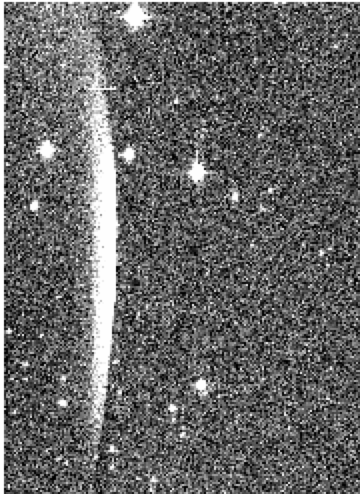
An examples of unusual saturation-like feature present along only part of the image edge with 0.96muS/pix readout timing.
These feature is seen up to ~120 pixels from the image edge suggesting that they can have a significant effect of the data. Inspection of prior images only showed this effect to be present in some images from 2020-03-31 when a prior image readout timing was performed.
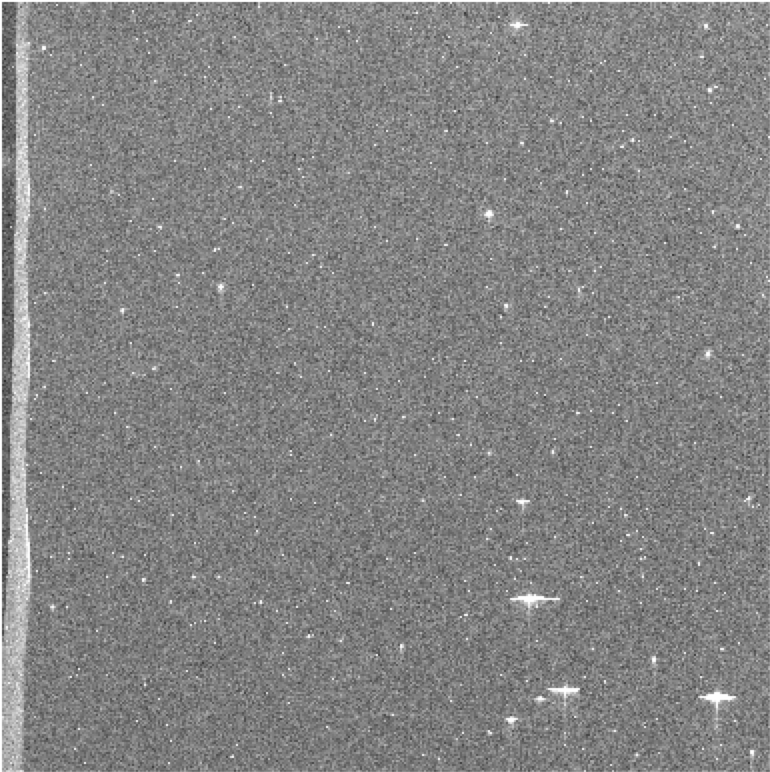
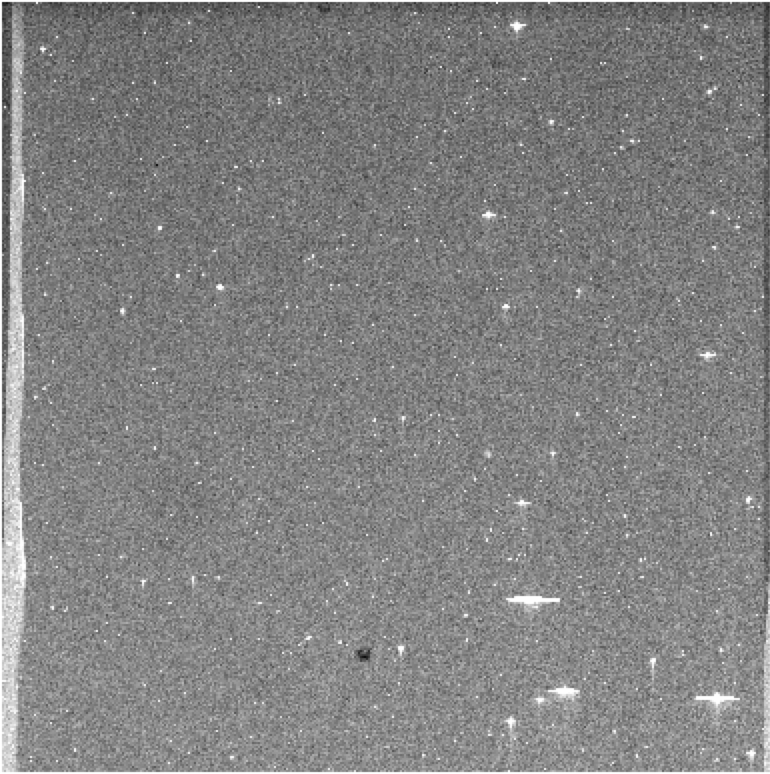
Example of an image with unusual saturation-like features along the image edge. Left: full frame image taken on 2020-03-31 (c03, q04, F667, exp-136204). Right: full frame image taken on 2020-04-16. (c03, q04, F667, exp-168368).
Further inspection of the images revealed that stars within the images exhibit saturation along lines rather than down columns. Furthermore, in some images it was evident that the background counts were surpressed along the columns of saturated stars.
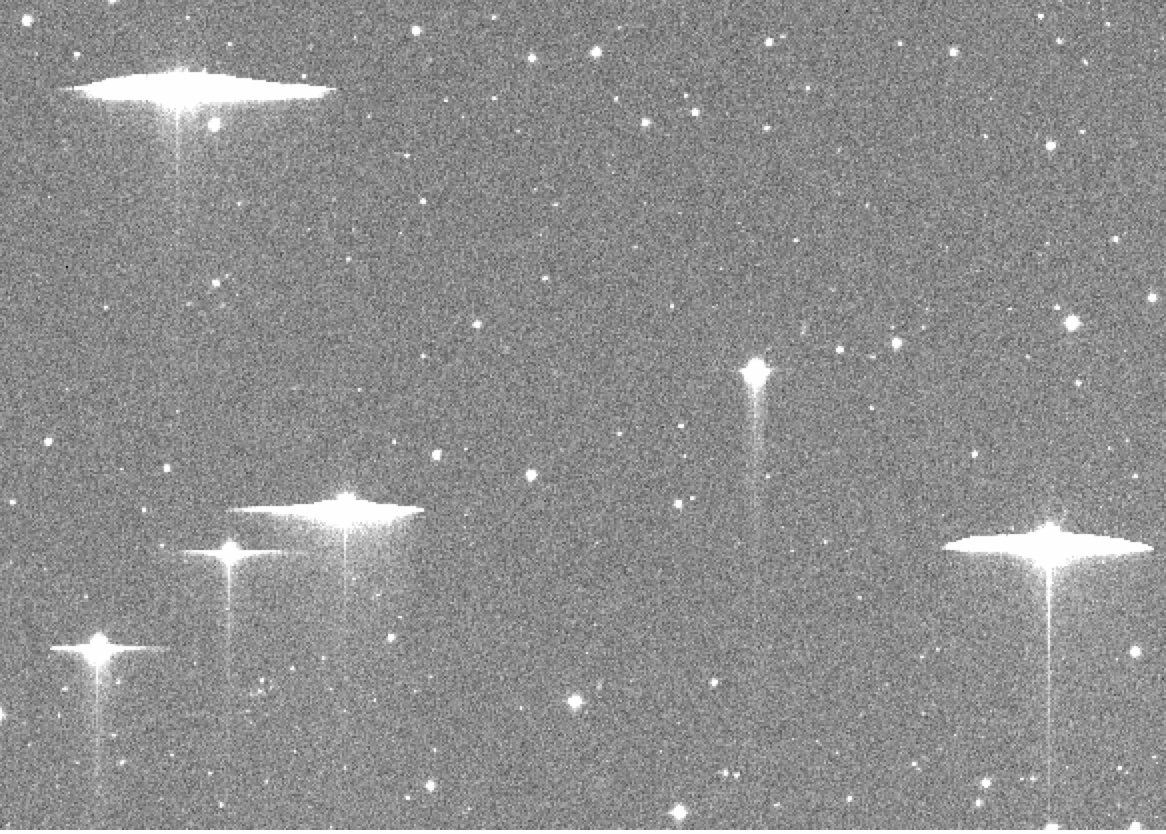
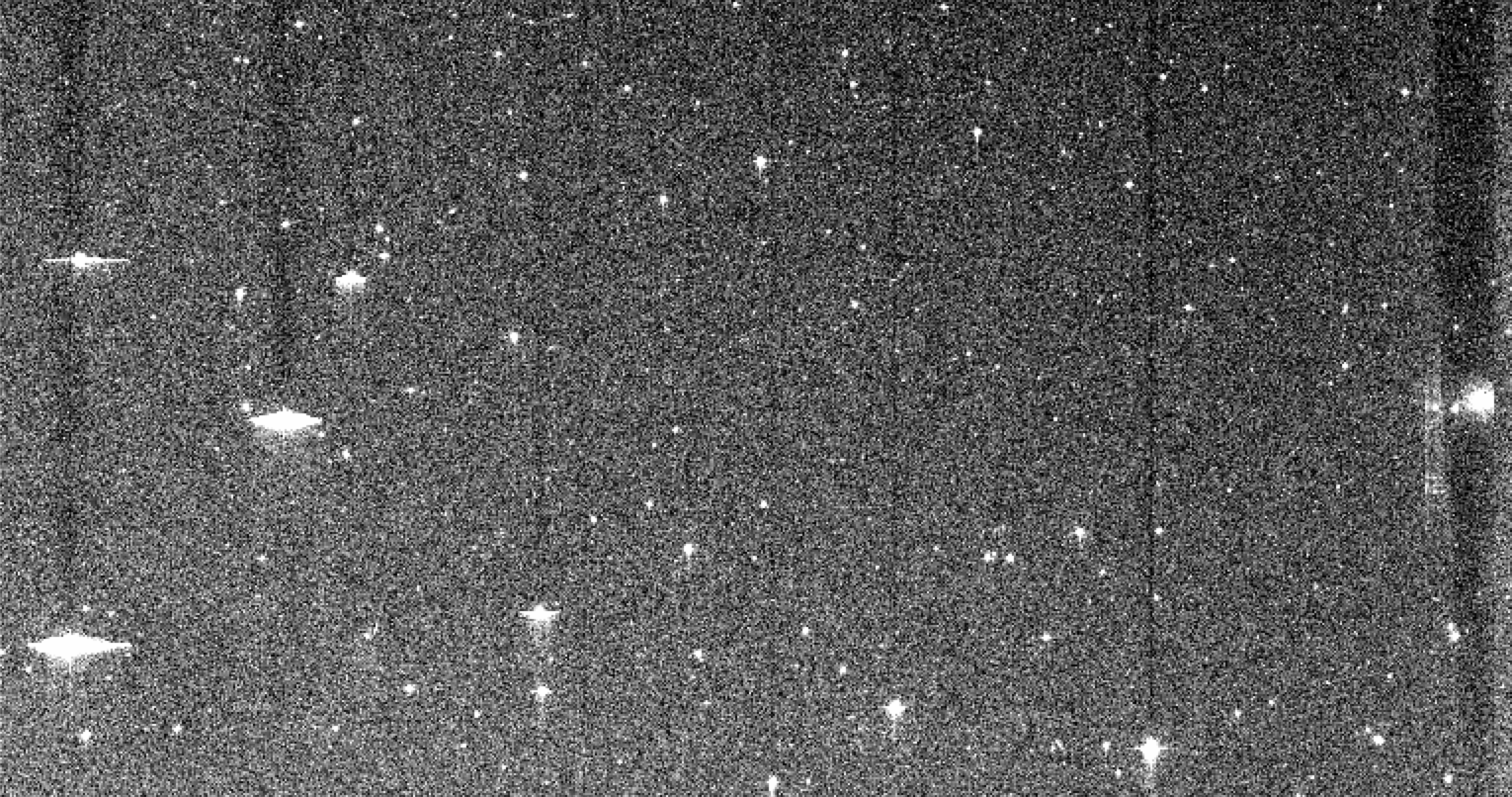
Examples images of stars with horizontal saturation and surpressed backgrounds. Left: stars with horontal saturation trails. Right: dark trails left by horizontally saturated stars.
The effects above were only seen in 2020-04-16 images taken with 0.96 and 0.99muS/pix readout timing. Images with 0.9muS/pix and current waveforms do not exhibit horizontal saturation features.
The current expectation is that these features will go away after a short amount of time (10 mins) since similar issues have been seen in the past.